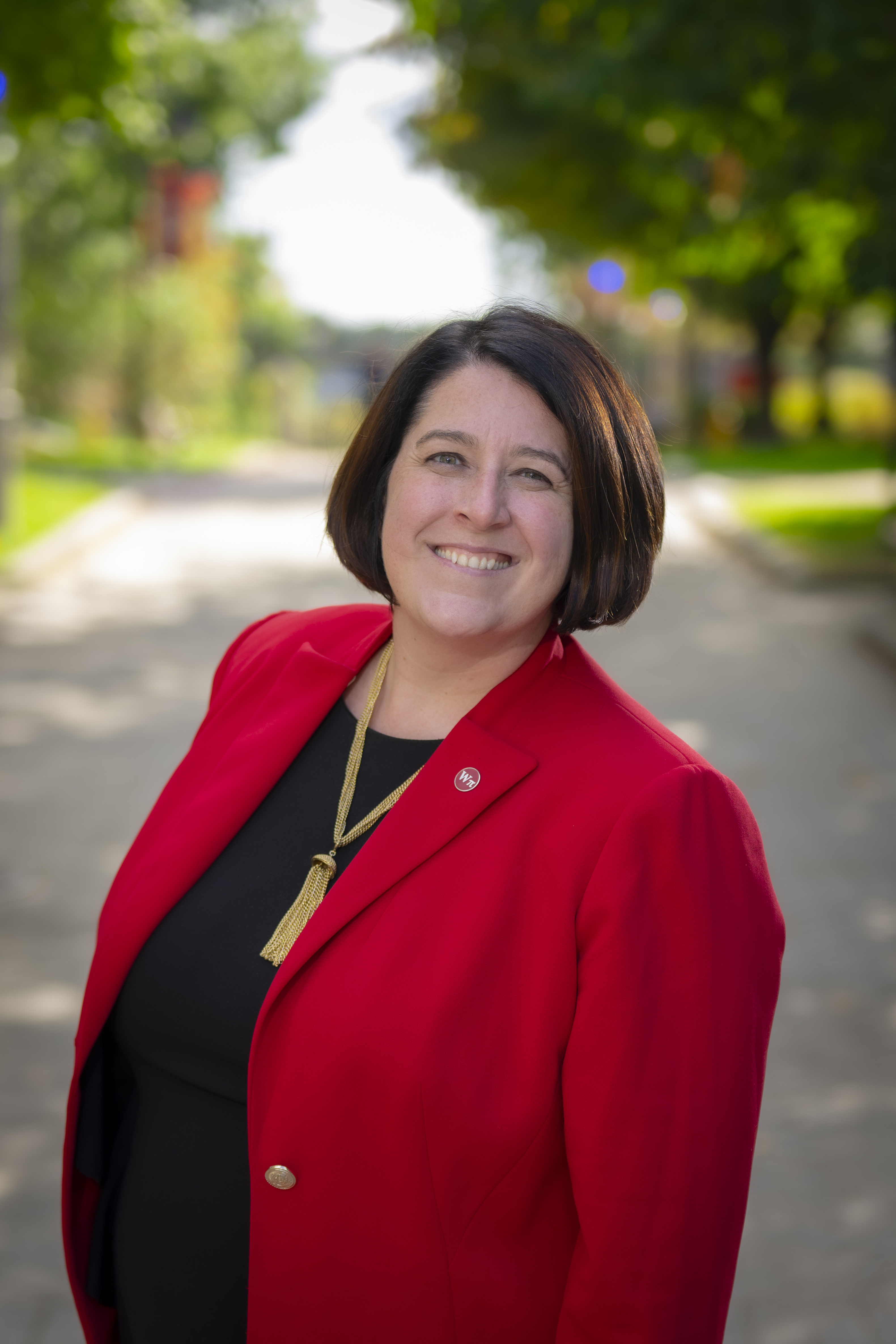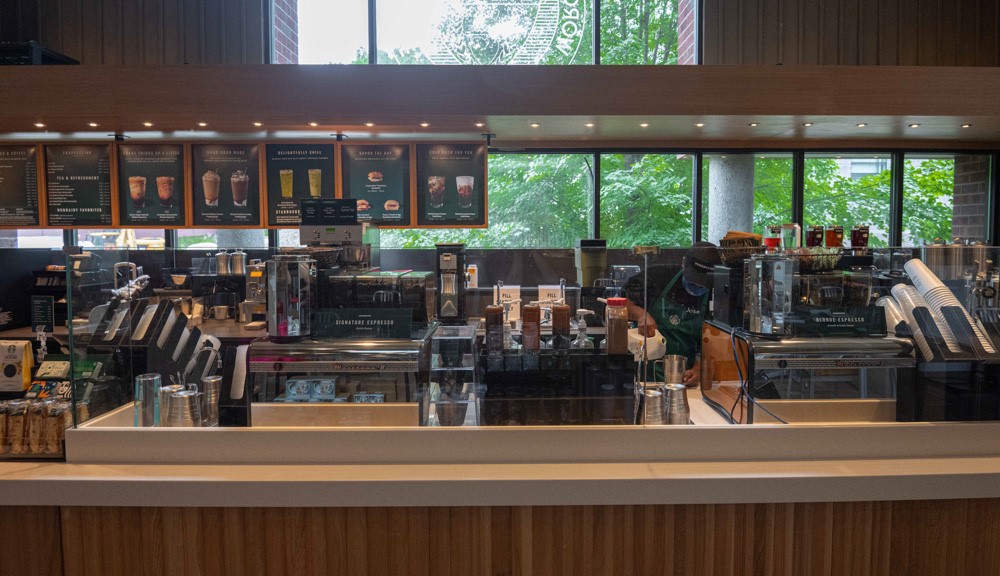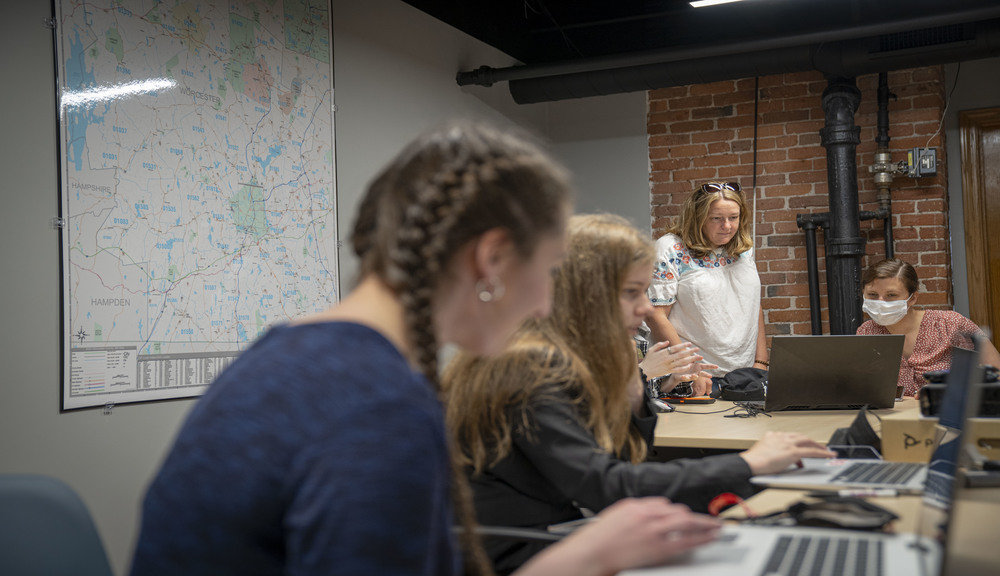Food insecurity is an urgent and concerning topic in higher education. At its most basic level, students who don’t have enough food aren’t at their best to keep up with the rigors of university life, but being hungry impacts every part of daily life—from physical to emotional health. At WPI a recent Interactive Qualifying Project (IQP) sought to better understand food insecurity on campus and prompted a cohesive, progressive plan to help any students with food insecurity.
Juniors Maggie Gaffney, Chris Renfro, and Dan Suitor completed their three-term IQP, “An Investigation of Food Insecurity at Worcester Polytechnic Institute,” and, through a survey of undergraduate and graduate students, identified issues of food insecurity while exploring whether obstacles to food access and proper nutrition exist among the student body. Co-advisors were professor and head of the Department of Humanities & Arts Kris Boudreau and assistant vice president and dean of students Greg Snoddy.

The report defined food security as "access by all people at all times to enough food for an active, healthy life ... [including] at a minimum (1) the ready availability of nutritionally adequate and safe foods, and (2) an assured ability to acquire acceptable foods in socially acceptable ways (e.g., without resorting to emergency food supplies, scavenging, stealing, or other coping strategies)."
It called attention to the various problems some students face in getting food. With barriers ranging from not having enough money for food to accessing food options outside of dining hall hours, the results show the various ways food insecurity directly impacts 2 percent of the student body that reported themselves “food insecure.” WPI’s leadership is taking this as a good starting point to find accurate representation of food insecurity on campus and to help fix the roots of the problem.
The survey, while small, tells a story of existing need. The students received responses from 551 of the 6,658 students surveyed (8.3 percent of the student body). Of the respondents, 134 reported food insecurity.
Alarmingly, the study also found disparities among demographic groups reporting food insecurity:
- 9 of the 19 African American respondents (4.9 percent of demographic in student body)
- 19 of the 53 Hispanic or Latinx respondents (3.6 percent of demographic in student body)
- 19 of 88 Asian respondents (5.6 percent of demographic in student body)
- 75 of 353 Caucasian respondents (1.9 percent of demographic in student body)
Even one student with food insecurity is too many, Snoddy says. Traditionally, assistance is given to students who self-identify as food insecure, so the wider scope of the IQP findings prompted further investigation. “We know food insecurity is a concern across college campuses. The IQP helped recognize this as an issue that some of our students may be facing at WPI, and now we are able to assess the whole scope of it,” says Snoddy.
Snoddy says the university appreciates the project work the students did to highlight what is often a hidden, or even taboo, subject. WPI has already begun putting into place solutions to immediately assist students and to help understand this problem more fully. To do that, the university is currently forming a food insecurity task force to ensure its students have enough access to food no matter what barriers there may be. This comprehensive plan will bring together the previously disparate areas of assistance that existed across campus and, Snoddy hopes, will encourage more students to seek help when hungry.
IQP team member Suitor says his own experience with food insecurity and the accompanying reluctance to ask for assistance led to his involvement. “I suffered from food insecurity as a student at WPI, particularly during my sophomore year,” he says. “It can truly affect every part of your life. Food insecurity isn't just hunger, it's also the stress of spending so much time and energy figuring out how to exist. Even worse, the shame and embarrassment I felt made me feel like I couldn't seek help.”
Assistant dean of students Emily Perlow has been spearheading an assessment of various options the university can implement to help students and to make sure they are aware of the available options. This spring, the university piloted a plan to make prepacked frozen meals available to students who needed food. Additionally, allowing students to take food to-go from the dining halls is also being considered.
The IQP efforts have helped shape the university’s existing programs around food insecurity on campus into a more comprehensive plan. “Going into this project, I thought we'd have a much more difficult time getting the WPI community to buy into food insecurity as a pressing concern,” Suitor says. “Instead, we found that almost everyone we spoke to was interested in discussing food insecurity as a serious challenge for college students and that, in fact, there were already numerous, diffuse efforts taking place to address it.”
The university is also exploring ways to help educate students about budgeting, meal planning, and time management. Without an understanding of ways to plan for and prepare inexpensive meals, students might not have the financial knowledge to budget for meals. And with busy schedules, planning around dining hall hours or food preferences can be a challenge, but with some help or flexibility (like the aforementioned take-away food options) students can create a more stable food plan for themselves.
“WPI students shouldn’t be struggling with food insecurity,” says Perlow. “We are here to help them manage all aspects of university life. Academics is a big part of WPI, but we focus on the well-being of the whole student, and we’re glad we can help students in this way.”
–By Julia Quinn-Szcesuil





